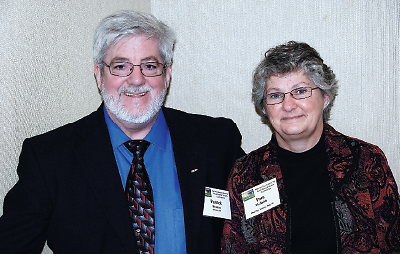Idaho County, Idaho, is bigger than the state of New Jersey and contains exactly one stoplight—and that’s inside St. Mary’s Hospital, said hospital president Patrick Branco, M.H.A., at the National Association for Rural Mental Health’s July conference in Washington.
The stoplight doesn’t even control traffic; it just serves to remind visitors about noise levels in St. Mary’s. Branco used the story to illustrate the remote settings of St. Mary’s, in Cottonwood, and its sister hospital, Clearwater Valley, in Orofino.
“It’s a long way to anywhere,” said Branco. Idaho County is classified as “frontier,” meaning it is at least 500 miles from a metropolitan area of 1 million people. That fact also means that, like other rural areas, it is hard to provide many kinds of specialized medical care, including psychiatric care.
There are five psychiatrists per 100,000 people in Idaho. The nearest adult psychiatrist is an hour away, and the nearest child psychiatrist works three hours away.
That isolation makes St. Mary’s “a pretty good lab for experiments in telemedicine,” added Branco’s colleague, Pam McBride, M.Ed., chief grants officer for the two hospitals.
About five years ago, telepsychiatry arrived by way of a vaguely anthropomorphic $200,000 device that contained EKG equipment and a stethoscope, along with a TV screen containing an image of a child psychiatrist in Boise, the state’s largest city.
Their current technology costs only $20,000, and Branco expects the next generation to cost only one-tenth of that.
“The quality of the video transmissions has improved as costs have gone down,” he said. “The little time lags are gone, and that improves the quality of the human interaction between doctor and patient.”
But telepsychiatry is not just putting a machine in a room and expecting it to work, said McBride. The model is consultative, as it is with other specialties. At first, St. Mary’s and Clearwater bought blocks of service time from St. Alphonsus Health System in Boise, which employed the psychiatrists, set rates, and handled the billing. They’re now changing to in-house billing and making a flat-rate payment to the Boise group.
Support for the telepsychiatry program comes from public and private insurance, but also from a number of federal programs run by the U.S. Department of Agriculture and the Health Resources and Services Administration. The Universal Service Rural Health Care program covers 65 percent of the connectivity costs.
Measuring outcomes has proven challenging, although Branco and McBride performed a retrospective chart review covering 100 patients over 18 months. About 33 percent of their patients were diagnosed with bipolar disorder and 20 percent with depression. Patients treated by means of telepsychiatry showed significantly lower annual rates of hospitalization, primary care visits, and emergency department visits for any reason compared with baseline. Annual costs of those services dropped from $5,103 per patient at baseline to $2,073, they found.
Branco is adamant about the need for continuity of care and collaboration at both ends of the telepsychiatric connection. “Our primary care practices have to take control of managing patients and coordinating with the psychiatrists,” he said. “And you need backups for the telepsychiatrists.”
Currently, psychiatrists William Terry, M.D., and William Hazel, M.D., in Boise are the leading champions for telepsychiatry in Idaho and ensure that a psychiatrist will be available when needed.
“Telepsychiatry is a viable tool to create access for underserved populations, but teamwork is crucial for success,” said McBride. ■
Information about St. Mary’s/Clearwater Valley Hospital and Clinics can be accessed
here.

